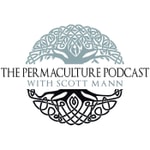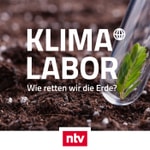The Regenerative Agroforestry Podcast – Détails, épisodes et analyse
Détails du podcast
Informations techniques et générales issues du flux RSS du podcast.

The Regenerative Agroforestry Podcast
Dimitri Tsitos & Etienne Compagnon
Fréquence : 1 épisode/20j. Total Éps: 57

Hosted on Acast. See acast.com/privacy for more information.
Classements récents
Dernières positions dans les classements Apple Podcasts et Spotify.
Apple Podcasts
🇬🇧 Grande Bretagne - naturalSciences
01/08/2025#90🇬🇧 Grande Bretagne - naturalSciences
31/07/2025#84🇬🇧 Grande Bretagne - naturalSciences
30/07/2025#71🇬🇧 Grande Bretagne - naturalSciences
29/07/2025#57🇬🇧 Grande Bretagne - naturalSciences
28/07/2025#44🇬🇧 Grande Bretagne - naturalSciences
14/07/2025#89🇬🇧 Grande Bretagne - naturalSciences
13/07/2025#74🇫🇷 France - naturalSciences
13/07/2025#96🇬🇧 Grande Bretagne - naturalSciences
12/07/2025#65🇫🇷 France - naturalSciences
12/07/2025#85
Spotify
Aucun classement récent disponible
Liens partagés entre épisodes et podcasts
Liens présents dans les descriptions d'épisodes et autres podcasts les utilisant également.
See all- https://gumroad.com/regenagroforestry
56 partages
- https://www.regenerativeagroforestry.org/
55 partages
- https://www.facebook.com/Mazifarm/
2 partages
- https://www.facebook.com/agricolaiside/
2 partages
Qualité et score du flux RSS
Évaluation technique de la qualité et de la structure du flux RSS.
See allScore global : 58%
Historique des publications
Répartition mensuelle des publications d'épisodes au fil des années.
#55 Economic modelling and agroforestry design with Harry Greene
Épisode 55
lundi 4 septembre 2023 • Durée 01:18:05
Propagate is a leader in the agroforestry space, specialising in project development and planting agroforestry systems at scale. It's a huge pleasure to chat with Harry, co-founder and Chief Research Officer of the US-based company. Tune in as we geek out on agroforestry economics, economic modelling, design implications and financing options. We delve into questions such as: How do you business plan agroforestry systems? How do we find a balance between economic performance and ecosystem services? And much more!
• RESOURCES
• GET IN TOUCH www.regenerativeagroforestry.org
• SUPPORT US www.gumroad.com/regenagroforestry
• FOLLOW US on Twitter, Facebook, LinkedIn and Instagram
• FUNDING FOR EUROPEAN PROJECTS https://explore.ecosia.org/regenerative-agriculture
Hosted on Acast. See acast.com/privacy for more information.
#54 The importance of peer to peer learning to activate local agroforestry dynamics with Claire Lemarié
Épisode 54
jeudi 2 mars 2023 • Durée 58:35
In this episode I discuss with Claire Lemarié her experience working with farmers in the Pays de la Loire region in France, where she is a technical adviser for the chamber of agriculture. She has precious insights into the management of mature hedges, as this region still has a significant amount of bocage: a traditional french hedge layout.
In this interview we gain an understanding of why effective information sharing between farmers is crucial to creating innovative agroforestry systems and how she enables peer to peer exchange through the 'Club des Agroforestiers'.
• RESOURCES
https://www.linkedin.com/in/claire-lemari%C3%A9-34b667155/?originalSubdomain=fr
Youtube video Chambre d'agriculture de la Loire
• GET IN TOUCH www.regenerativeagroforestry.org
• SUPPORT US www.gumroad.com/regenagroforestry
• FOLLOW US on Twitter, Facebook, LinkedIn and Instagram
• FUNDING FOR EUROPEAN PROJECTS https://explore.ecosia.org/regenerative-agriculture
Hosted on Acast. See acast.com/privacy for more information.
#45 Rethinking the agricultural status-quo by mimicking natural ecosystems with Mark Shepard
Épisode 45
vendredi 16 septembre 2022 • Durée 01:33:46
Mark Shepard is the founder of the Restoration Agriculture farming method and New Forest Farm, where Mark grows food in perennial polycultures, without using external fertilisers, with very limited management activities, whilst integrating animals. In this episode, Mark shares with us the results he has achieved by actively engaging with tree crop breeding on his farm - one of the foundations of his system. Mark is also the author of two books: ‘Restoration Agriculture: Real World Permaculture for Farmers’ and ‘Water for Any Farm’. He is also the founder of Restoration Agriculture Development, an enterprises that catalyses Restoration Agriculture projects worldwide. We hope you enjoy the interview!
TABLE OF CONTENTS
02:15 How did you get to agroforestry?
10:44 What is restoration agriculture?
19:33 Low inputs and precocity of yield
31:29 Description of New Forest Farm
40:10 How do you harvest?
45:42 Managing the system
49:20 Biodiversity on the farm
57:22 Process of plant selection
01:02:40 Starting a nursery
01:07:28 Why haven’t more people replicated your system?
01:12:00 Which cultivars to include in mass selection?
01:21:19 What is the key knowledge required to get started?
• RESOURCES
https://restoringagriculture.com/
https://www.instagram.com/restoration.ag/?hl=en
https://www.facebook.com/restorationagriculture/
• GET IN TOUCH www.regenerativeagroforestry.org
• SUPPORT US www.gumroad.com/regenagroforestry
• FOLLOW US on Twitter, Facebook, LinkedIn and Instagram
• FUNDING FOR EUROPEAN PROJECTS https://explore.ecosia.org/regenerative-agriculture
Hosted on Acast. See acast.com/privacy for more information.
#44 The potential of fast growing biomass trees in agroforestry systems with Michael Weitz
Épisode 44
jeudi 25 août 2022 • Durée 02:02:51
Michael Weitz is a European expert in fast growing biomass trees, with a special passion for Poplar. These fast growing crops are especially interesting for agroforestry systems thanks to their early returns and their capacity to produce ecosystem services early on. Furthermore, the need to find alternatives to fossil fuels and sustainable building materials is leading to evolving economic opportunities for farmers. In this interview we are hitting the nail on the head when it comes to integrating valuable tree crops on our farms! Michael has the ability to zoom into the technical details and zoom out to the bigger picture questions around biomass crops. Enjoy learning about the flexibility and beauty of poplar as well as the challenges that need to be overcome to scale these systems. This is hopefully the first of many interviews on the topic of fast growing trees!
TABLE OF CONTENTS
02:41 Introduction
09:24 Biomass crops
16:45 Poplar industry and market
22:57 Flexibility of the poplar crop
29:28 Medium term cycle poplar for agroforestry
34:56 Which cycle to optimise biomass production
37:20 Management requirements
45:00 What is the minimum scale for economic viability?
53:46 Favouring medium cycle on a small scale
57:24 Planting on marginal land
01:06:58 Shouldn’t agricultural land stay dedicated to food production instead of biomass production?
01:18:42 Biomass crops and diversification
01:25:26 Carbon credits and biodiversity credits
01:28:41 Market trends on wood products
01:34:26 Can a third party implement and manage the biomass crop?
01:44:22 How can we diversify biomass species?
• RESOURCES
• GET IN TOUCH www.regenerativeagroforestry.org
• SUPPORT US www.gumroad.com/regenagroforestry
• FOLLOW US on Twitter, Facebook, LinkedIn and Instagram
• FUNDING FOR EUROPEAN PROJECTS https://explore.ecosia.org/regenerative-agriculture
Hosted on Acast. See acast.com/privacy for more information.
#43 The story, philosophy and principles of Syntropic Farming with Marc Leiber
Épisode 43
lundi 1 août 2022 • Durée 01:26:50
Syntropic Farming has recently gained international attention, and it is about time we interview an expert on the podcast! Whilst I call him an expert, Marc Leiber prefers to see himself as a student of Syntropic Farming. He has been trained by Ernst Gotsch, the founder of the movement, and continues to work intimately with him on his farm, Quinta das Abelhas, in Southern Portugal. We believe there are few people better positioned to talk about this subject than Marc. In this interview you will understand the history, the philosophy and the principles behind Syntropic Farming. Whilst many questions remain as to how it can be scaled and the economics on our climate, Marc told such a fascinating story that we had to leave if for next time. We hope you enjoy!
TABLE OF CONTENTS
00:01:40 Marc’s story
00:11:55 The work of Ernst Gotsch
00:41:37 The principles of Syntropic Farming
01:12:20 Marc’s research farm
• RESOURCES
• GET IN TOUCH www.regenerativeagroforestry.org
• SUPPORT US www.gumroad.com/regenagroforestry
• FOLLOW US on Twitter, Facebook, LinkedIn and Instagram
• FUNDING FOR EUROPEAN PROJECTS https://explore.ecosia.org/regenerative-agriculture
Hosted on Acast. See acast.com/privacy for more information.
#42 Stories and facts: how to convince decision makers about the importance of agroforestry
Épisode 42
vendredi 15 juillet 2022 • Durée 01:04:20
Today I have the pleasure of welcoming Patrick Worms on the show. He is a policy advisor for World Agroforestry and the ex-president of the European Agroforestry Federation. We discuss together agroforestry from a policy perspective to understand how we convince decision makers and what type of funding is needed to scale agroforestry. Although much of the conversation is focused on Europe, Patrick gives some insights that will be of great interest to anyone who wants to convince key players of the opportunity of agroforestry. Patrick is an amazing speaker and you will find this interview to be not only highly informative but also entertaining and full of punchlines.
TABLE OF CONTENTS
01:49 Personal background
04:52 The appeal of agroforestry
06:23 Work at ICRAF
08:00 The power of stories
11:22 Missions of EURAF
18:00 Perception of agroforestry in policy circles
20:44 What is preventing a scaling of agroforestry?
23:37 What is blocking agroforestry within EU member states?
27:55 Agroforestry in the African context
34:50 Successful examples from East Asia
41:54 Funding agroforestry
46:04 What role for private funding?
52:36 Is the case for agroforestry clear and properly demonstrated?
• RESOURCES
https://euraf.isa.utl.pt/welcome
https://www.worldagroforestry.org/
• GET IN TOUCH www.regenerativeagroforestry.org
• SUPPORT US www.gumroad.com/regenagroforestry
• FOLLOW US on Twitter, Facebook, LinkedIn and Instagram
• FUNDING FOR EUROPEAN PROJECTS https://explore.ecosia.org/regenerative-agriculture
Hosted on Acast. See acast.com/privacy for more information.
#41 The transition to Regen Ag and Belgian alley cropping trials with Soil Capital Farming
Épisode 41
jeudi 16 juin 2022 • Durée 01:51:08
Thomas Lecomte and Guillaume Sneessens are agronomists and experts in the field of regenerative agriculture. Through Soil Capital Farming, they both manage and consult a significant amount of acreage. Thomas and Guillaume both see an important role of agroforestry for their clients, integrating more and more perennial systems in farm transitions. We wanted to understand more about what a regenerative transition means to them, and the potential they see in trees. We were extremely well served, and could have kept talking for many more hours. As farm managers they have also started a 5ha alley cropping trial with walnuts and cereals. They go through the details of their design methodology and the key decisions they made.
This episode is divided in two parts - check the table of contents for more details. Enjoy!
TABLE OF CONTENTS
Part I - Regenerative Transition
02:24 Personal journeys
12:06 Soil Capital Farming’s mission
19:05 Does a transition to Regen Ag mean a loss of yields?
23:52 Initial steps for the transition of a farm
35:53 Barriers to transition to Regen Ag
42:48 Selling Regen Ag produce
53:08 Where does agroforestry fit in the farm system?
Part II - Alley Cropping Trial
01:03:22 Alley cropping trial plot in Belgium
01:15:50 Challenge of diversifying knowledge
01:24:57 Funding of the alley cropping system
01:29:39 Labour costs
01:35:14 Scaling agroforestry systems
01:46:13 Integrating agroforestry into a global design of the farm
• RESOURCES
https://www.soilcapitalfarming.ag/
https://www.instagram.com/soilcapfarming/
• GET IN TOUCH www.regenerativeagroforestry.org
• SUPPORT US www.gumroad.com/regenagroforestry
• FOLLOW US on Twitter, Facebook, LinkedIn and Instagram
• FUNDING FOR EUROPEAN PROJECTS https://explore.ecosia.org/regenerative-agriculture
Hosted on Acast. See acast.com/privacy for more information.
#40 How to diversify a milk and meat farm using silvopasture and alley cropping with Felix Riecken
Épisode 40
jeudi 9 juin 2022 • Durée 01:13:10
I talk with Felix Riecken who is planting out silvopastoral and silvoarable systems on his 90ha family farm in the North of Germany. The farm traditionally produces cow milk and meat. He explains the journey that led him to agroforestry and integrating these techniques into the family business. His systems being still quite young, we focus the conversation on the design, the objectives and the establishment of the tree systems. This goes from choosing the right genetics, to protecting the trees and managing the weeds. Felix also explains how he successfully funded the agroforestry systems.
In Collaboration with the German Agroforestry Association (DeFAF)
TABLE OF CONTENTS
01:48 Felix’s story
08:18 Overview of the farm
20:16 Agroforestry systems
30:56 Objectives and design
40:13 Choosing varieties and genetics
46:38 Protection of the young trees
50:30 Weed management
55:34 Balancing complexity and labour
01:01:24 Funding
01:10 Next steps
• RESOURCES
https://rieckens-landmilch.de/eichhof/familie-riecken/
• GET IN TOUCH www.regenerativeagroforestry.org
• SUPPORT US www.gumroad.com/regenagroforestry
• FOLLOW US on Twitter, Facebook, LinkedIn and Instagram
• FUNDING FOR EUROPEAN PROJECTS https://explore.ecosia.org/regenerative-agriculture
Hosted on Acast. See acast.com/privacy for more information.
Special Episode #1 - EURAF Conference 2022
mardi 31 mai 2022 • Durée 12:29
As Dimitri and I travelled recently to the 2022 EURAF conference in Sardinia, we wanted to share with you the work of the European Agroforestry Federation. In this short interview with their president, Patrick Worms, he explains what the organisation does and its next steps. We also discuss how we can build additional bridges between research and practitioners.
• RESOURCES
http://www.europeanagroforestry.eu/about
• GET IN TOUCH www.regenerativeagroforestry.org
• SUPPORT US www.gumroad.com/regenagroforestry
• FOLLOW US on Twitter, Facebook, LinkedIn and Instagram
Hosted on Acast. See acast.com/privacy for more information.
#39 The nuances of farm forestry and the opportunities of integrating biodiversity with Campbell Mercer
Épisode 39
mardi 3 mai 2022 • Durée 01:46:54
Campbell Mercer owns 40ha outside Melbourne, Australia where he has set up a world class olive farm - producing award winning organic olive oil. Campbell uses a variety of fascinating agroforestry practices, from windbreaks to farm forestry and silvopastural systems. We have an in-depth conversation on small scale farm forestry, from design considerations to harvest and selling. We also discussed the Keyline cultivation pattern and its implications for tree planting, finishing off with the various functions of his windbreaks and their interaction with neighbouring olive trees. Overall, Campbell has not been shy to make use of tree systems to align his production with the ecology he works in. He has managed to harness the ecosystem services provided by trees whilst ensuring they remain economically productive.
TABLE OF CONTENTS
02:42 Story and context of the farm
11:09 Why go organic?
13:28 Use of black wattle
19:52 Selling small quantities of timber
23:16 Main objectives of agroforestry on the farm
27:56 Design of the systems
39:04 Sawing material
40:56 Drying the wood
43:37 Pruning
46:35 Profitability of timber plantations
57:22 Interactions between grass and trees
01:01:24 Planting along the keyline pattern
01:05:17 Feedback on deep ripping and swales
01:10:46 Would you do keyline again?
01:19:41 Windbreaks
01:28:34 Choice of species in windbreak
01:38:17 Production from them
01:40:28 Interactions between windbreak and olive trees
01:45:00 Improved overall productivity
• RESOURCES
https://mannahillestate.com.au/
https://www.instagram.com/mannahill.estate/
• GET IN TOUCH www.regenerativeagroforestry.org
• SUPPORT US www.gumroad.com/regenagroforestry
• FOLLOW US on Twitter, Facebook, LinkedIn and Instagram
Hosted on Acast. See acast.com/privacy for more information.








